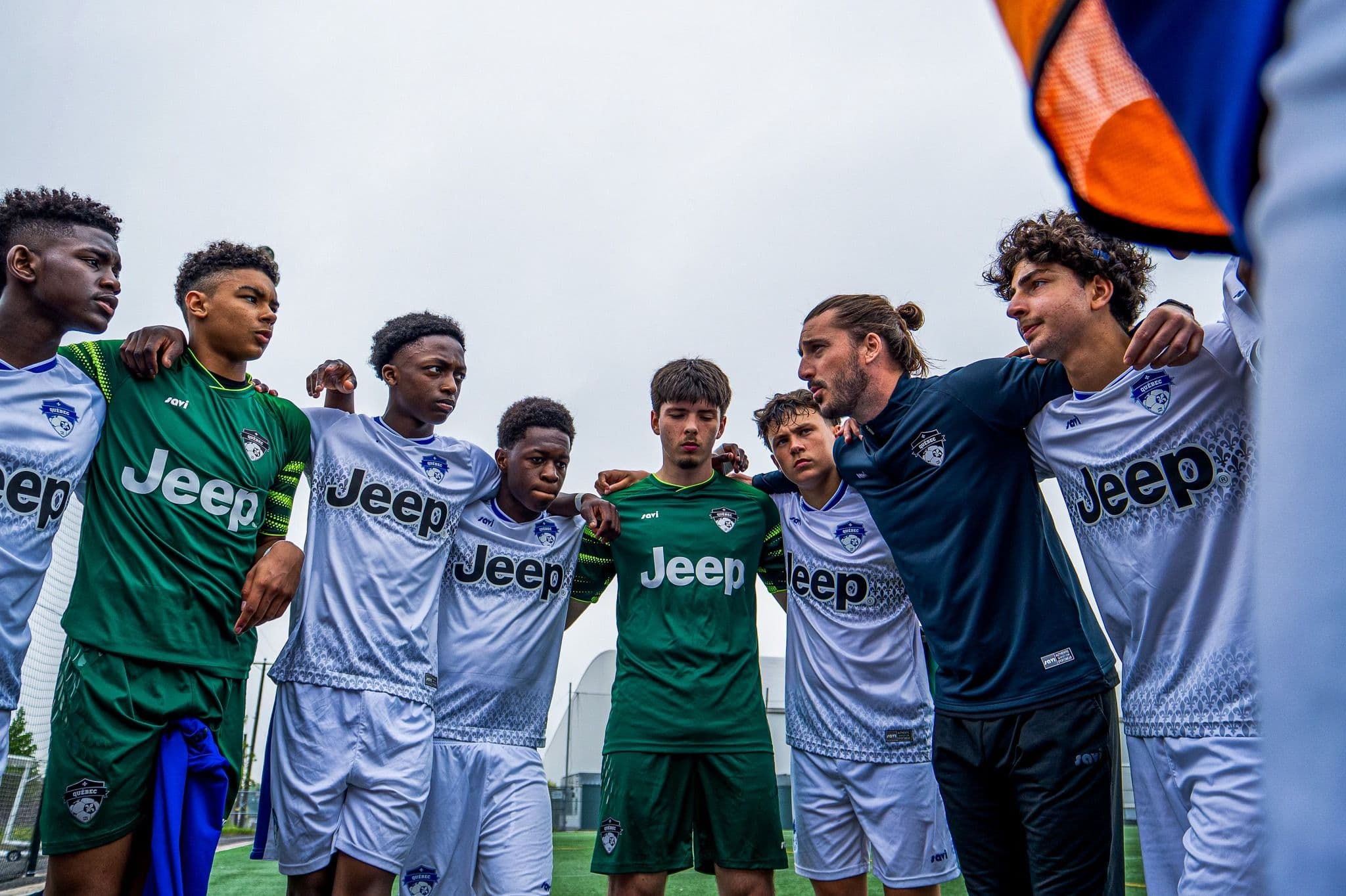Between consistency and flexibility, David Cerasuolo, Quebec Soccer's Head of Development and Performance, presents the principles of this provincial tactical identity.
Can we talk about a Quebec tactical identity?
Yes, and it was defined in the Provincial Identification Program (PIP). In any case, this is the framework we have formalized for our six national teams—three women's and three men's—from U15 to U17, and to prepare players for the demands of the next level. To achieve this, we have worked extensively internally, in the development department, to adhere to the Canadian Soccer Association's guidelines, but also to adapt them to the nuances related to the coaches who lead the project.
What are the specificities and singularities of Quebec teams?
Our offensive singularity lies in the intensity and the constant search for control and superiority on the field. Regardless of the system, our players must avoid sterile possession: when conditions are favorable—the opposing team stretched out, spaces created—they must play between the lines and verticalize. We also emphasize running: if the ball carrier is off target, there must be at least two deep runs to impact the opponent. Finally, we work on preventative coverage (+1), although we also consider numerical equality, like some modern teams.
An ambitious game plan that must be based on distinct phases of play. What are they?
We talk about the "four universal moments" of a match, without excluding set pieces: offensive and defensive organization, offensive and defensive transition. What's essential is the connection between these phases. If certain players don't switch at the right time, the team is immediately in danger. We have defined clear tactical principles for each phase—seven for offensive organization, five for defensive transition, and so on. They aren't fixed, but they remain non-negotiable.
"One of our basic rules is to defend on three of the five vertical corridors on the side where the ball is located and horizontally for 25 metres"
What are your key playing principles?
On offense, prioritise verticality and superiority, with coordinated runs. On defense, anticipate ball loss, apply immediate pressure to cut passing lines, and recover quickly. Otherwise, reorganize the defensive block, often by shifting the play outward to trap the opponent and not leave any space inside thanks to our density. One of our basic rules is to defend on three of the five vertical corridors on the side where the ball is located and horizontally for 25 metres. In transition, you must anticipate to gain a head start. And upon recovery: pass forward, run forward, dribble forward. The goal is to give players confidence by encouraging them to perform positive actions.
How do you distinguish these principles in player training?
A cycle consists of 10 to 12 sessions, which isn't a lot. Each training session must therefore focus on at least two game moments, for example, offensive organization and defensive transition, because there is a link between the two. With more experienced groups, we go up to three consecutive moments. During each session, we choose two or three key principles. We plan in advance to maintain a balance, but remain adaptable according to the needs and level of the group.
What evolution do you expect from a player between the U13 and U17 levels?
The PIP begins at the U15 level. Before that, in the U13-U14 levels, we expect players to have acquired the fundamentals of 11-a-side play: offensive and defensive organization, positions, and the four universal moments. Soccer Québec has a project regarding learning objectives for the U9 to U14 categories. The documentation is shared within our ecosystem so that clubs and regions can use it and implement it in their organizations and programs. In the U15-U16 levels, we enter tactical development, with a high level of requirements to give the 80 young players selected from across Quebec the right tools for tactical understanding and adaptability. In the U17 level, it's the development phase, before moving on to the Senior level. Perfection doesn't exist, but the mentality must be to always aim for the maximum and address all the challenges of the game.
"Our principles will remain relevant, but their execution will have to be faster and more precise"
One of the values you advocate is "self-awareness." What does it encompass?
It's central. Players must be honest with themselves: today in training, did you give your all? Were you punctual? Dedicated? Actively switching on before warming up. They must be aware of all aspects of performance and understand that representing a province of 8.5 million people involves a role other than that of a club.
In twenty years, what might the "perfect" Quebec identity look like?
Football will continue to evolve in speed, intensity, and technical demands. Our principles will remain relevant, but their execution will have to be faster and more precise. But I am convinced that there will always be room for difference. When Barça dominated between 2008 and 2012, other models were also successful. Adaptability is essential: the playing identity must remain at the service of all players, both womens and mens.


What if youth soccer was judged by something other than results? The MLS has taken the plunge and its Technical Director, Frederic Lipka, explains this "revolution."
The International Football Institute (IFI), specialist educator for key roles within football, begins a new collaboration with Vcoaching!

Xabi Alonso, Arteta, and Emery all attended the Gipuzkoa coaching school. Vcoaching visited the summer training camp at this coaching factory at Real Sociedad.


